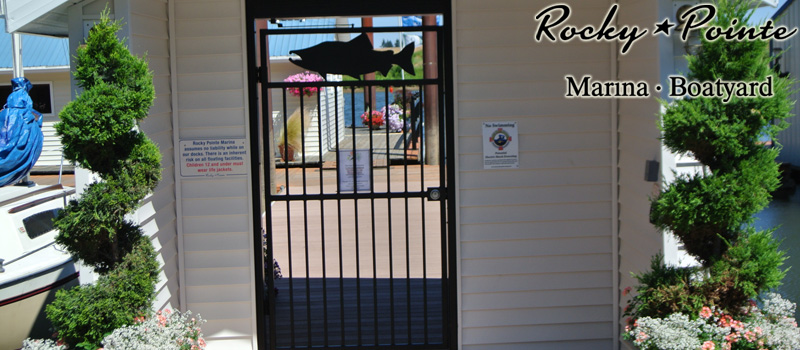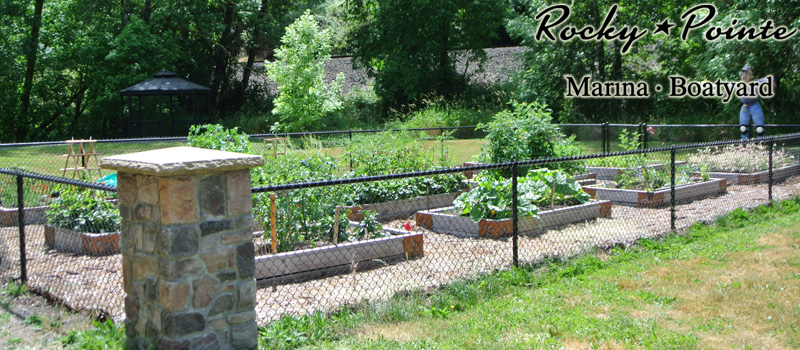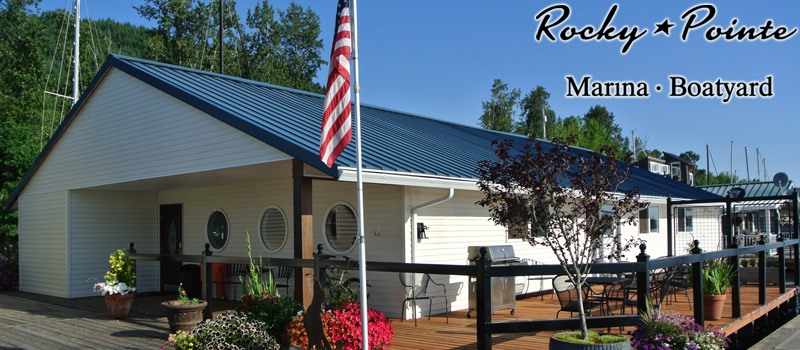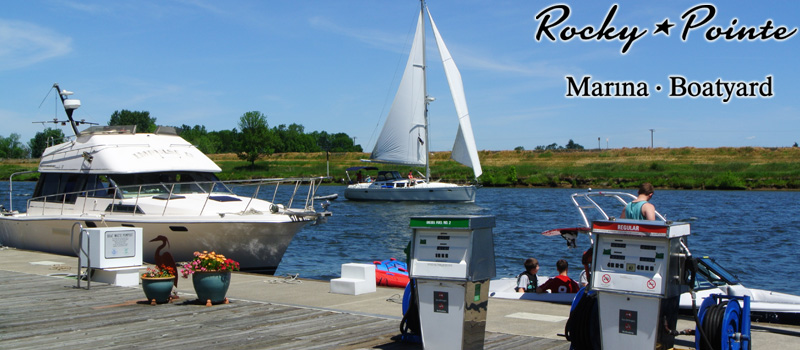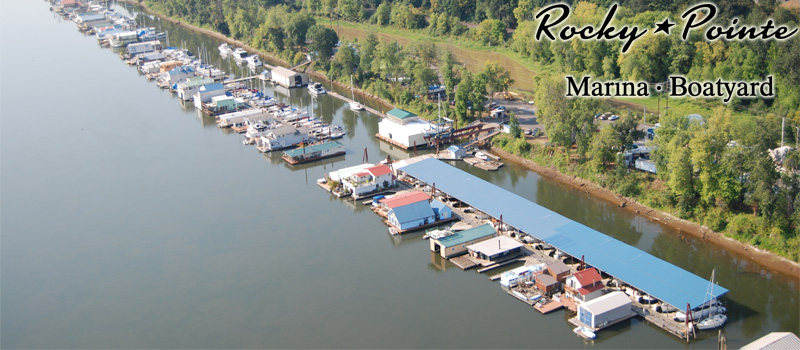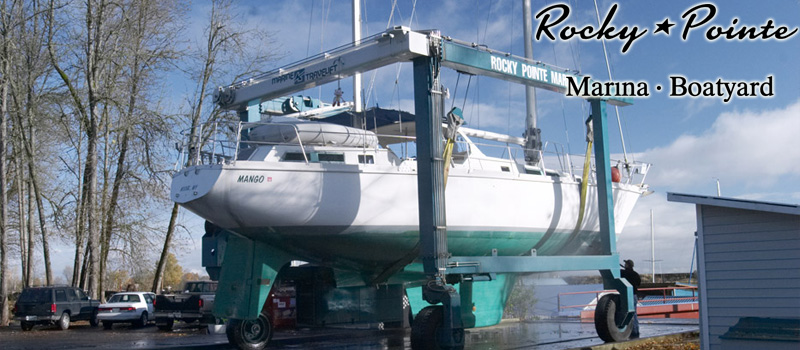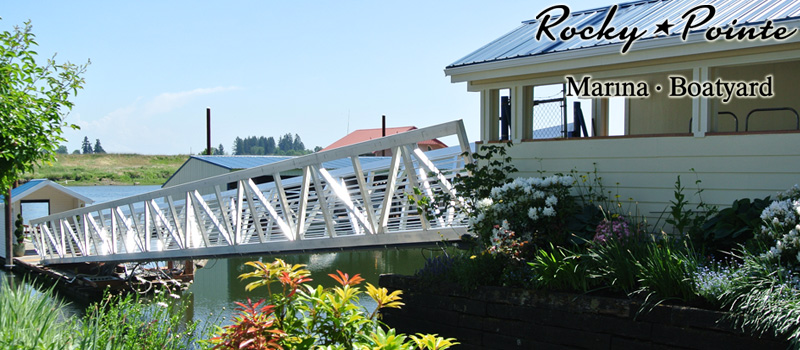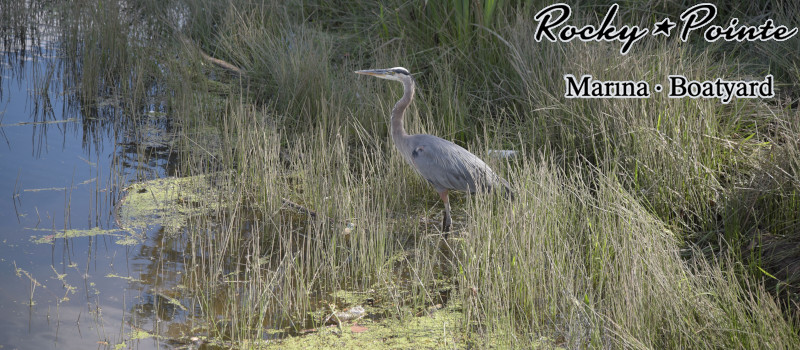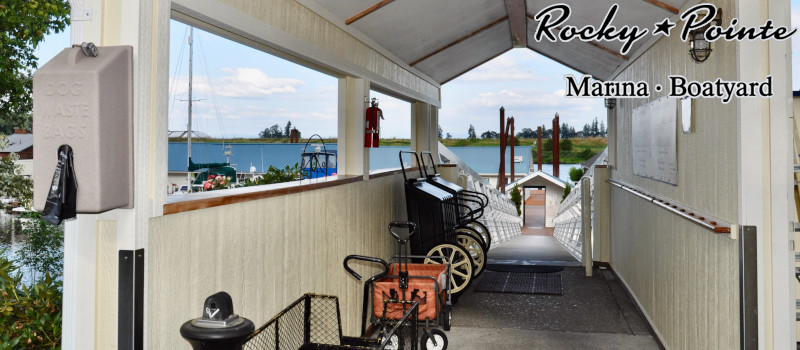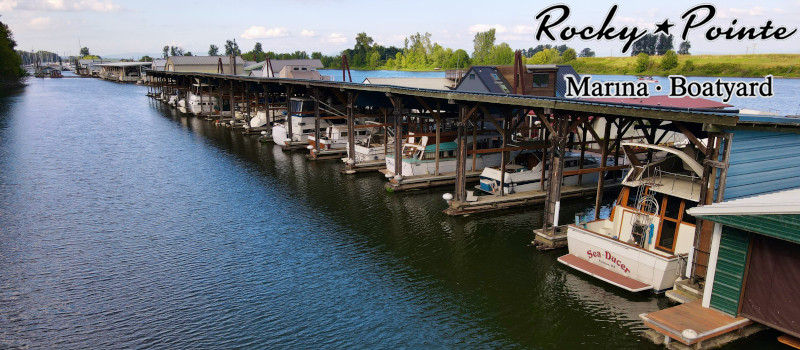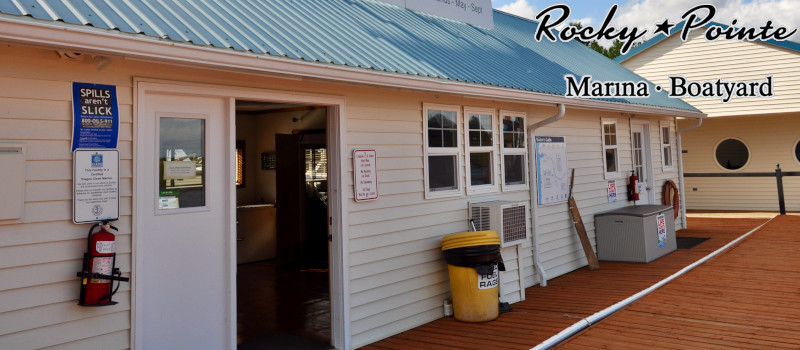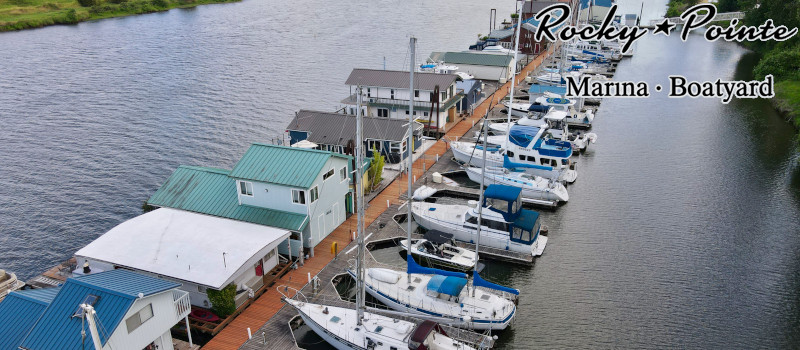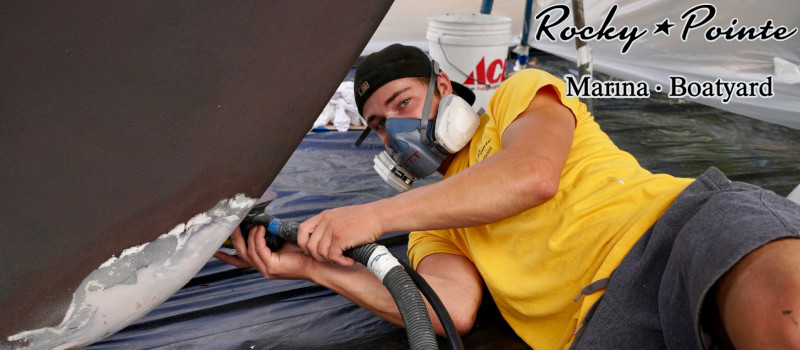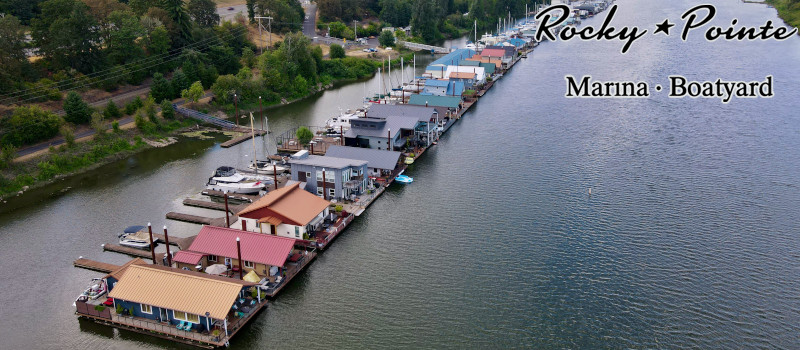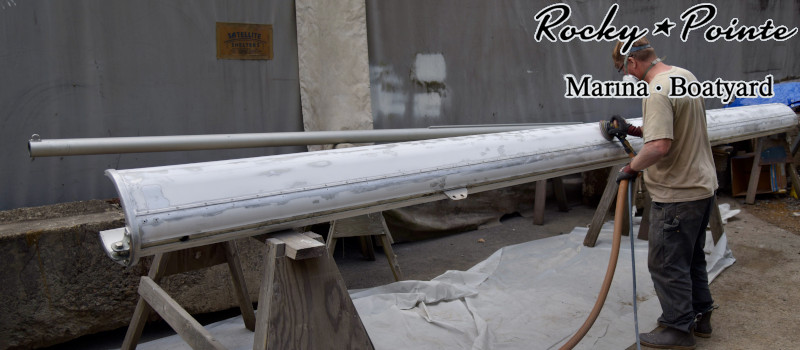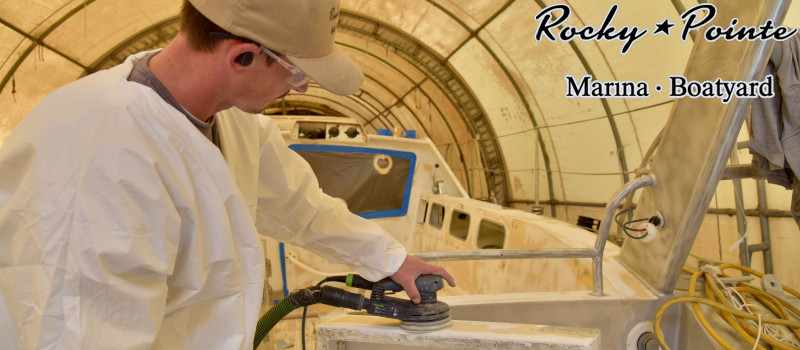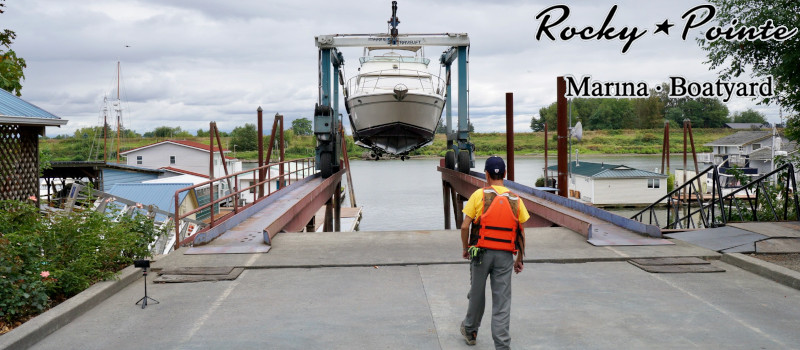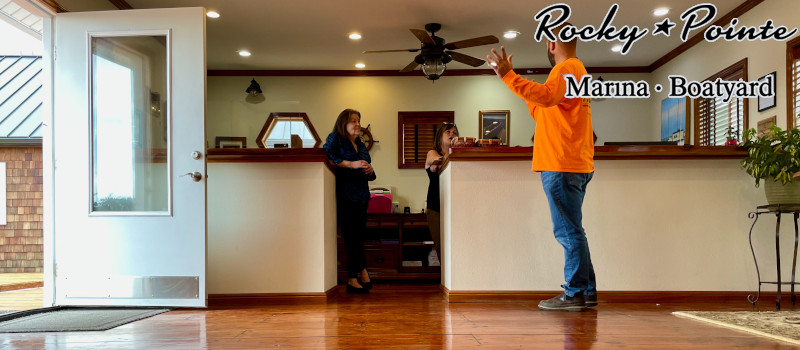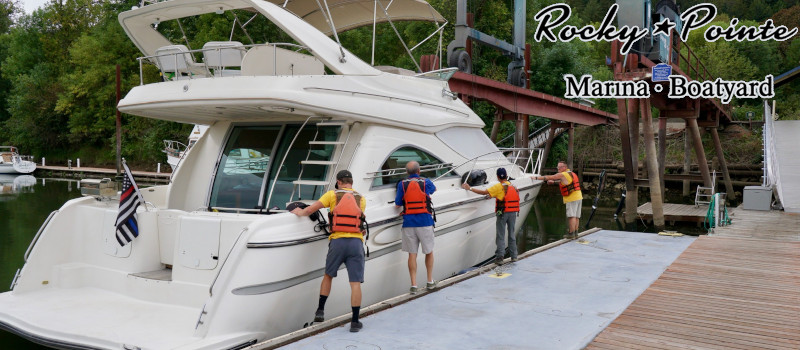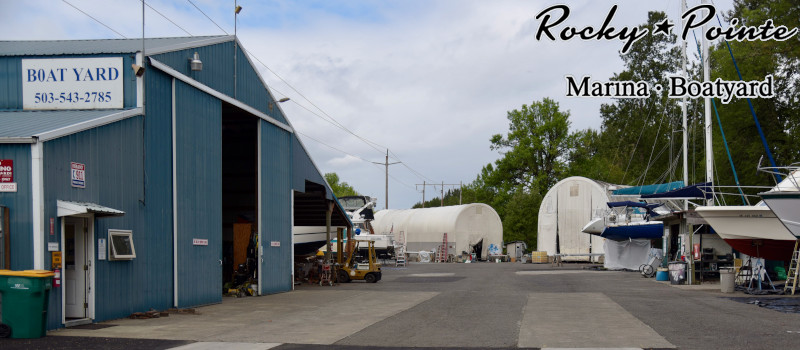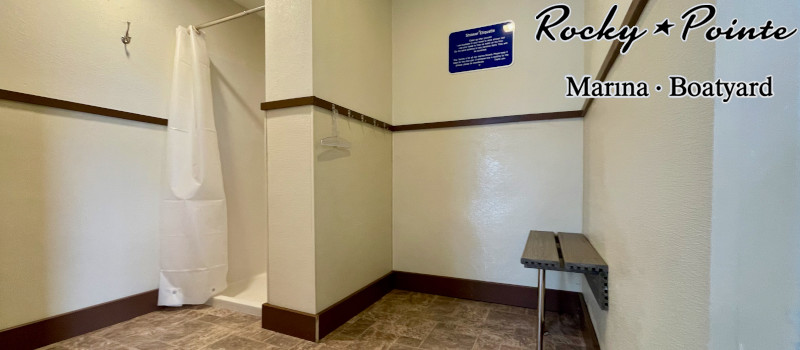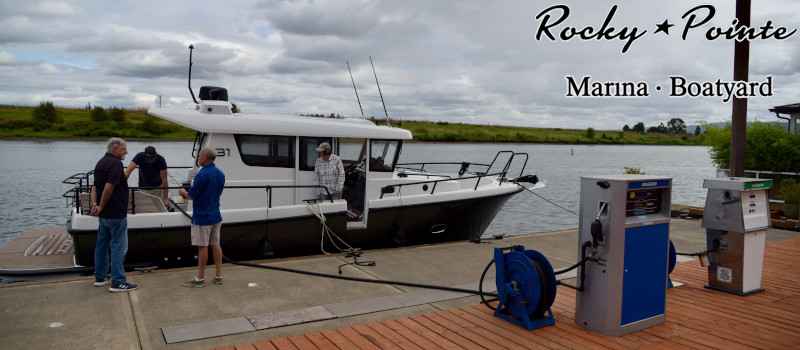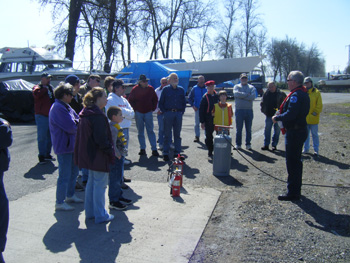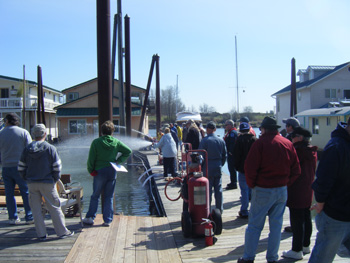Rocky Pointe Marina Emergency Plan
Rocky Pointe Prepares Tenants to be Responders
Revised September 2023
Emergency Procedures for Rocky Pointe Marina Residents and Tenants
Living on the water at a marina brings additional responsibilities to its residents that must be planned for. The following information, along with annual training and review, will better prepare us to address emergencies within our marina community and the unique challenges we face. We feel it is best to train and educate all tenants living at the marina, along with all staff members, rather than a select few. Our marina and boatyard staff are very well trained to respond to most emergencies. However, they are only available during normal business hours. Every situation is different so you may only use some of these procedures. The more trained people you have around the more things can be done.
8 to 10 minutes is how long it takes on average for the Scappoose Fire and Paramedics to arrive at our front gate. It takes another 5 to 8 minutes for them to get their equipment to the emergency area. The fire boat takes 45 to 60 minutes.
Anything we can do before they arrive is valuable life saving time.
We all can accomplish a lot in this time period to fight or prepare to fight a fire or help with medical needs such as CPR and AED. Standing guard at the gate or at the top of ramp to guide The Fire Department to the emergency is very important; someone trained can start CPR and use the AED if appropriate. Every second and minute counts to help save a life.
Emergency and Fire Procedures:
In the time it takes to make a phone call, a small fire may easily be extinguished by a bucket or fire extinguisher. Use your best judgment to either put out the fire or get someone else to call 911. 911 should be called for all fires regardless of size or the fact that we extinguished the fire ourselves.
Call 911– follow the instructions of 911 dispatch and turn on the siren to get helpers.
Identify your location: Rocky Pointe Marina, located at 23586 NW St Helens Rd, Portland, Oregon 97231– Multnomah County, Scappoose Fire District
Identify the emergency: Fire, medical or (name the emergency)
Identify where in the marina: on a (house or boat) in the (upper, middle, lower) section of the marina. Stay on the line if they ask you to. Keep yelling for help if no one has come to your aid yet. Turn on sirens if there is a fire or you need help with any type of emergency.
– Marina Office (if business hours) 503-543-7003 option 1
The marina office will make the rest of the calls during office hours.
-Scappoose Fire Department 503-543-5026
-Craig Cook 971-328-2823
-Boatyard Office (if business hours) 503-543-7003 option 5
-Stan Tonneson 503-329-0298 (cell) 503-987-1899 (home) extreme emergency only such as a fire.
-Jen Tonneson 503-704-0101 (cell) 503-987-1899 (home) other emergencies can be handled by 911
Fire
These instructions are for a more serious fire. Fires start small. They typically double in size every minute. There are many water buckets and fire extinguishers everywhere in the marina. Use them as needed. In 17 years, there have been 4 dock fires put out with a bucket and 1 fuel fire on a boat at the fuel dock put out by Jen with a fire extinguisher. If there are enough people available, designate all the following at the same time. If not, do in order as listed. If possible, send someone to the security gate to hold it open and direct fire trucks to emergency.
#1 Priority is to avoid injury to anyone. Look for anyone aboard the boat or floating home.
#2 Priority is to get attention and keep everyone in a safe place. Yell up and down the docks and turn on the warning siren in your area. There are 5 sirens in the marina. In the upper the switch is located at the last covered boat slip next to the kayak shack. In the lower portion of upper the switch is on the front of the yellow workshop across from the clubhouse. In the middle marina the switch is located on the outside of the restroom. In the lower marina the switch is located at the first covered slip. In the boatyard the switch is in the workers’ break area.
#3 Priority is to avoid having the fire spread beyond a single boat or house. Do Not push a burning boat into the river. Instead, remove all surrounding boats and/or houses as much as possible. Evacuate all nearby people in homes or boats.
#4 Priority is to get water started. Gather the fire pumps near the fire and start fire pumps. We have a total of 4 fire pumps in the marina. The lower marina pump is under the very first covered boat slip. In the middle marina it is in the utility shed at the bottom of the ramp and in the upper there are 2 on the clubhouse side dock. You may use the water to put out a small to medium fire but if it is large already use the water on the boats or houses next to the fire to keep the fire from spreading, the fire department may want to use our pumps while they are setting up their equipment. (They use the same pumps). Follow the instructions of the fire department when they arrive.
Giant Fire Extinguishers on Wheels are also located where we keep the regular pumps. These are big and will put out a big boat fire quickly. There are 2 tanks almost 5 feet tall. Instructions are posted. Simply open the valve on the nitrogen tank, get the hose in position and pull back handle on hose.
Obey Fire Command Unconditionally!
AED/CPR
There is an AED in each of the 3 marina sections. Approximately 50% of our residents are trained to use these. Medical emergencies are much more common than fires. Be prepared.
Snow/Ice/Freezing
Slippery docks, frozen pipes and heavy snow weight on roofs and decks are all events that floating homeowners need to be aware of and plan for.
Our staff will use de-icer on primary docks and ramps when frost is in the forecast. It is done between 8am and 9am on weekdays. Other times and days there is de-icer available at the top of each ramp that you can take to your house in a container you provide. Please do not take the entire bag home, only take what you need for a few days. There are some community volunteers that salt their section of the marina getting it done before we can. This is very much appreciated, and more volunteers are welcome. Do thank you volunteers in your area.
Snow removal on the docks is a low priority for our staff as snow on the docks provides good traction versus having snow removed with a thin layer of ice still present. Our staff tends to our covered structures to remove the snow load and also tends to our water and sewer systems as their priority.
If you choice too, snow removal on the docks is a community event. Generally done after no more snow is forecast. Neighbors help your neighbors! Someone may be sick and not able to tend to their docks. If you see the snow piling up, knock on their door and ask how they are doing. When snow is in the forecast, at least 5 snow shovels will be placed in each of the emergency sheds for tenants to shovel snow off their house and the dock in front of their house. Please return the shovels when you are finished for others to use.
Ice and snow on the hill exiting the marina is always a challenge. It is a county road but with low priority. Many people park their cars at the truck station the day or evening before and walk up the hill.
Floating Structure Snow Removal
Snow removal from the covered boat slip roofs will be done by the boatyard staff when snow the snow exceeds 6 inches or if 6 inches total accumulation is forecast. Employees will also secure all stern lines of boats in these areas to provide more buoyancy. Do not remove your mooring lines or remove your boats from under the cover when there is snow without checking with the office first.
Freezing temperatures are more common than snow. Our water pipes are above ground and will freeze. The marina turns off and drains all water lines on the inside of the marina that supply boats from November 1 until about March 1. It is important that floating homes keep a small flow of water running in their homes during times that temperatures stay below freezing for more than 6 continuous hours. This water flow/trickle should not exceed 2 gallons per hour. Contact the office for more details. To maintain water pressure for the entire marina, please turn it off water once temperatures go able freezing. Water supply to houses that are unoccupied during freezing weather will be shut off. The reason for this is if your pipes freeze and break, water will not flood your house. If you have a vacation home, are not here regularly or will be gone overnight, it would be prudent to turn your water off and drain your lines if freezing temperatures are forecasted. The marina keeps a dripping faucet at the external end of all water lines on the docks and restrooms. Please do not turn these off! If the temperatures stay in the teens for extended periods of time (over a week) the water may slow down in some areas that people have allowed to freeze up. With less water in, that means less water out (sewage) and then the sewer system can freeze. Once that happens water and sewer are not available until the weather warms. We will advise of a marina systems closure, should the threat of environmental contamination become possible. It would be very rare for this to happen, if everyone follows these guidelines to keep the water moving.
Windstorm
Heavy winds can blow items off decks and docks. It can also cause houses or boats to break loose from their moorings. Please keep items on docks and decks to a minimum during windy times. Secure barbeques, kayaks, furniture, etc. with rope or other tie downs. Inspect the mooring chains on your house regularly. Inspect mooring lines and cleats on your boats. Should a boat, home or dock come loose, secure lines to keep it from floating away and immediately report it to the office or emergency contact. There are ropes and chain pulleys in the emergency sheds.
Person in Water
If you think you hear someone yelling for help, please go look! They may have been there for a while and getting weak. If you find someone in the water, help them out if you can do so safely. If not, toss them something that floats and begin yelling for help immediately. There are life rings with ropes on the docks. Look around your immediate area, anything that floats can help. Use an ice chest, cushion, small boat, life vest or even a dock line of a boat to help pull them in.
DO NOT JUMP IN THE WATER YOURSELF. We will then have two people to rescue. A person panicking can pull you under. The best way to help is to get them a floatation device as soon as possible. Get more help by yelling and quickly devise a plan to get them close to the nearest point of exit from the waterway. The possibility of stray electrical current can also cause you to drown. If possible, quickly unplug the boat’s shore power cords from the power pedestals nearest to the person in the water. As help begins to arrive, have someone immediately cut power to that portion of the marina. If you need to get to a person, take a boat. Do not be bashful looking for a boat. Grab what you can, a canoe, kayak, raft or dinghy. During this time always keep your eyes on the person in the water. Continue yelling for help or for someone to turn on the siren and call 911. A person in the water may have only a few minutes.
Pollution Spill
Fuel and oil spills in the water must be contained and cleaned up. Reporting to the US Coast Guard National Response Center at 800-424-8802 is required for substantial spills. An example would be a sunk boat with 50+ gallons of fuel on board leaking out. A sheen one the water is not a reportable spill. Marina and boatyard staff will respond to begin containment and assessment of the spill and make additional contacts as required by State and Federal Law. If contact cannot be made with the owner of an unattended vessel and urgency is required to contain the environmental exposure, staff will immediately handle the situation and bill the responsible party for containment supplies. Check your bilges often, always keep petroleum product absorbent pads/socks in your bilge while in marina waters.
Filling of boat tanks with fuel cans is strictly prohibited at Rocky Pointe Marina.
Fuel spill containment booms and absorbents are located in each section of the marina. In the upper the box is located on the office float on the mail dock on the corner near the clubhouse.In the middle and lower marinas they are located in a gray dock box next to the restrooms. Booms are $2/Ft and absorbent pads are .50
Boat Sinking
Contact the marina office with slip location, type and size of boat, and how badly it is sinking. They will contact marina and boatyard staff for assistance. There are electrical pumps located in the emergency sheds. The fire pumps can be used, especially for bigger needs. The fire buckets can be used as well to bail out boats.
You can help by making sure the boat is securely tied to the docks. Also check shore power cords. Many times power gets accidently unplugged causing batteries to go low and simply plugging back in will activate the onboard bilge pumps.
Flood Preparedness Plan
Flood Warning Plan:
Typical high-water times are late spring in April, May and June when the snow is melting naturally off the mountains. There can also be high water spikes during the snow season when low level snow falls are melted by the warm heavy rains. In either event, advance notice is typically a week or more. Typical low water levels in the summer are about 3-5 feet and high-water levels in the winter about 6-8 feet. The parking lot of Rocky Pointe Marina starts getting some water at about 18 feet. FYI-The water crest level in February 1996 was 23 feet and the pilings are set at 26-27 feet. The highest elevation of the parking lot is 20 feet.
There is a direct link on Rocky Pointe’s Website to the river level data provided by NOAA for our specific area. It gives the past 5-day level and projections for the future 5 days. Marina life makes observing water levels a daily habit. If levels go above 10 feet, daily monitoring of river level projections is done by Marina management. Water levels rise at a rate of 1 to 2 feet per day giving plenty of time to plan and prepare. Any tidal events are calculated in the predictions from NOAA.
If projections are for water levels to be 18 feet or greater, the following plans will be implemented:
Parking Lot
In accordance with the written rules for Rocky Pointe Marina, the follow will take place when river levels are projected to reach 18 feet within 5 days:
-
Postings will be made at all community bulletin boards in the marina that high water levels may reach flood levels for the marina and appropriate action needs to be taken.
-
Should this event be near the monthly statement mailing date, the same warnings will be included with mailing.
Contact by phone to owners of all vehicles parked at the marina and request removal to the uplands at the entrance to Rocky Pointe Marina on Hwy 30. (DOT truck parking area). There is ample space for over 100 vehicles. All vehicles are to be on record in the marina office as well as a visible valid parking permit within the vehicle. If a vehicle continues to be parked in the marina parking lot 2 days prior to a river level event of 18 feet, then those vehicles will either be towed or left to be flooded. Vehicle owners will be responsible for all charges incurred for towing. If a tenant has provided keys for the vehicle during flood stage events, the vehicle will be moved at no charge to the uplands. There is a key safe at the marina office. If you are going to be away for an extended period during high water season, it is recommended you leave a set of keys along with the description and license plate number of the vehicle with the office staff to avoid being towed. The marina will not be responsible for loss or damage to any vehicle that is left unattended and subject to towing. Any vehicle that remains unmoved after 48 hours of notification and reasonable attempts were made to contact the owner using phone numbers on file are subject to towing. It is the obligation of the tenant to maintain current contact information at the marina office.
Upland Parking Rules: (DOT Truck Parking Area)
Only the off road parking area nearest the shoreline is to be used for parking. All the roadways are part of the truck weigh station and must be kept clear at all times for trucks. Portable signs will be placed by Rocky Pointe Marina as to the appropriate areas to park.
